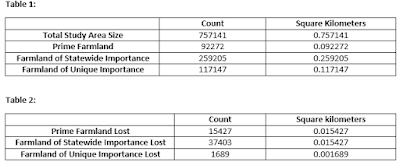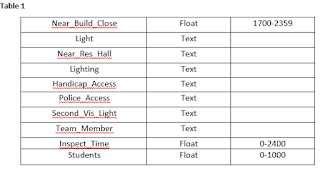Table:
| OBJECTID * | Hubway Station | Spots Per Station | |
| 1 | Andrew Station - Dorchester Ave at Humboldt Pl | 5 | |
| 2 | Aquarium Station - 200 Atlantic Ave. | 4 | |
| 3 | Bowdoin St. at Hamilton St. | 9 | |
| 4 | Charles St at Beacon St | 3 | |
| 5 | Columbia Rd at Ceylon St | 13 | |
| 6 | Curtis Hall at South Street | 3 | |
| 7 | Day Boulevard | 3 | |
| 8 | Dudley Square | 10 | |
| 9 | EBNHC - Maverick Sq | 7 | |
| 10 | Egleston Square at Columbus Ave | 5 | |
| 11 | Faneuil Hall - Union St. at North St. | 5 | |
| 12 | Franklin Park - Seaver Street at Humbolt Ave | 1 | |
| 13 | Franklin Park Zoo | 6 | |
| 14 | Grove Hall Library | 12 | |
| 15 | Hayes Square at Vine St. | 1 | |
| 16 | Mass Ave at Newmarket Square | 2 | |
| 17 | Maverick Sq - Lewis Mall | 2 | |
| 18 | Mayor Martin J Walsh - 28 State St | 2 | |
| 19 | MLK Blvd at Washington St | 5 | |
| 20 | Mt Pleasant Ave / Dudley Town Common | 11 | |
| 21 | Oak Square YMCA | 1 | |
| 22 | Roxbury YMCA | 5 | |
| 23 | The Eddy at New Street | 2 | |
| 24 | Tremont St / West St | 3 | |
| 25 | Union Square - Brighton Ave. at Cambridge St. | 2 | |
| 26 | Upham's Corner - Ramsey St at Dudley St | 7 | |
| 27 | Upham's Corner T Stop | 4 | |
| 28 | Walnut Ave at Crawford St | 3 | |
| 29 | Walnut Ave at Warren St | 3 | |
| 30 | Washington St at Melnea Cass Blvd | 3 | |
| 31 | West Broadway at Dorchester St | 4 | |
Description:
This map is representing the amount of free WiFi spots within a one mile distance to hubway stations in Boston, Massachusetts. The spots on the map represent the different hubway stations, which are represented in table under the Hubway Station section. The lines on the map represent a distance of one mile to the hubway stations, within that one mile it represents the amount of free WiFi spots which are represented in the table under the Spots per Station column. This map could be helpful for anyone travelling through the city especially if they need WiFi to find their way around or find the Hubway schedule!
Data was collected from Boston Open Data, BostonGIS.
WiFi Data: http://bostonopendata-boston.opendata.arcgis.com/datasets/4b803745fedd4e88861967d16a1e07fb_0
Hubway Stations Data: http://bostonopendata-boston.opendata.arcgis.com/datasets/ee7474e2a0aa45cbbdfe0b747a5eb032_0




